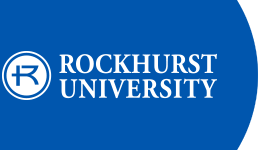Alumna, Faculty Partner on Study of Veteran Volunteerism

For many veterans, service to community doesn’t end with discharge or retirement.
And in a recent study, two members of the Rockhurst University community — an alumna and a faculty member — sought to glean lessons from how one veterans service organization approached inspiring young vets to stay connected and continue to serve after their military careers were over.
Jennifer Rinella, Ed.D., associate professor of management and associate dean of academic programs, and Merritt Neil, ’97, president and principal of Merrigan and Co. and adjunct professor of marketing, are the authors of “#StillServing: Engaging younger veterans in continued service,” an article published in the Journal of Philanthropy and Marketing in April, the result of a case study of the VFW’s #StillServing campaign. It’s a collaboration that was borne from a relationship that is both personal and professional.“We’ve always enjoyed working together on curriculum development, talking about what’s happening in industry and what we want students to learn, and helping students connect with internships and jobs,” Rinella said. “And we're friends! As fellow alumnae, professors in the nonprofit leadership program, and mothers of young adult children, we have no shortage of things to talk about.”
One of the things they had long talked about was a joint research project. Eventually, they turned their attention to one of Neil’s clients, the VFW, which launched the #StillServing campaign in 2020 to highlight the contributions of veterans to American society through social media and first-person storytelling.
Rinella and Neil analyzed every facet of the campaign — from the audience analysis that went into it to the development of messaging and tactics and how the organization tested and adapted strategies along the way. It was research that promised insights for other organizations into how to develop effective awareness campaigns.
“Although scholarly writing can be tedious, the opportunity to shine a light on the commitment and resilience of veterans – and to potentially help community organizations and younger generations connect through causes they care about – gave our writing purpose,” Rinella said.
They reached a number of conclusions through their research, noting the campaign’s agile approach, use of listening through things like surveys to guide the campaign, the wealth of tools provided to invite engagement, the use of earned media to spread the word, and the way campaign leaders both honored the legacy of the VFW while also allowing for an evolution of its identity. Even for someone who already knew about the campaign, the study yielded some surprises.
“Because of my longstanding work with the VFW, I knew that service to others was a cornerstone value of those in the military. What
surprised me was the incredible degree of intensity younger veterans feel around continuing that service and maintaining those connections,” Neil said. “Rather than veterans’ organizations being irrelevant to today’s society, they are ripe to offer opportunities young veterans yearn for.”The research might have focused on a particular campaign and organization, but the insights gained have implications for any organization hoping to increase awareness or engage authentically with their clients or audience. The lessons learned, to borrow a military phrase, are already making their way into the classroom, Rinella and Neil said.
“This case will be a great way for students to learn from what worked well as well as what was less effective and compare these strategies with others they have observed or tested,” Rinella said. “Students also will be invited to share their insights to inform future iterations of the campaign.”









